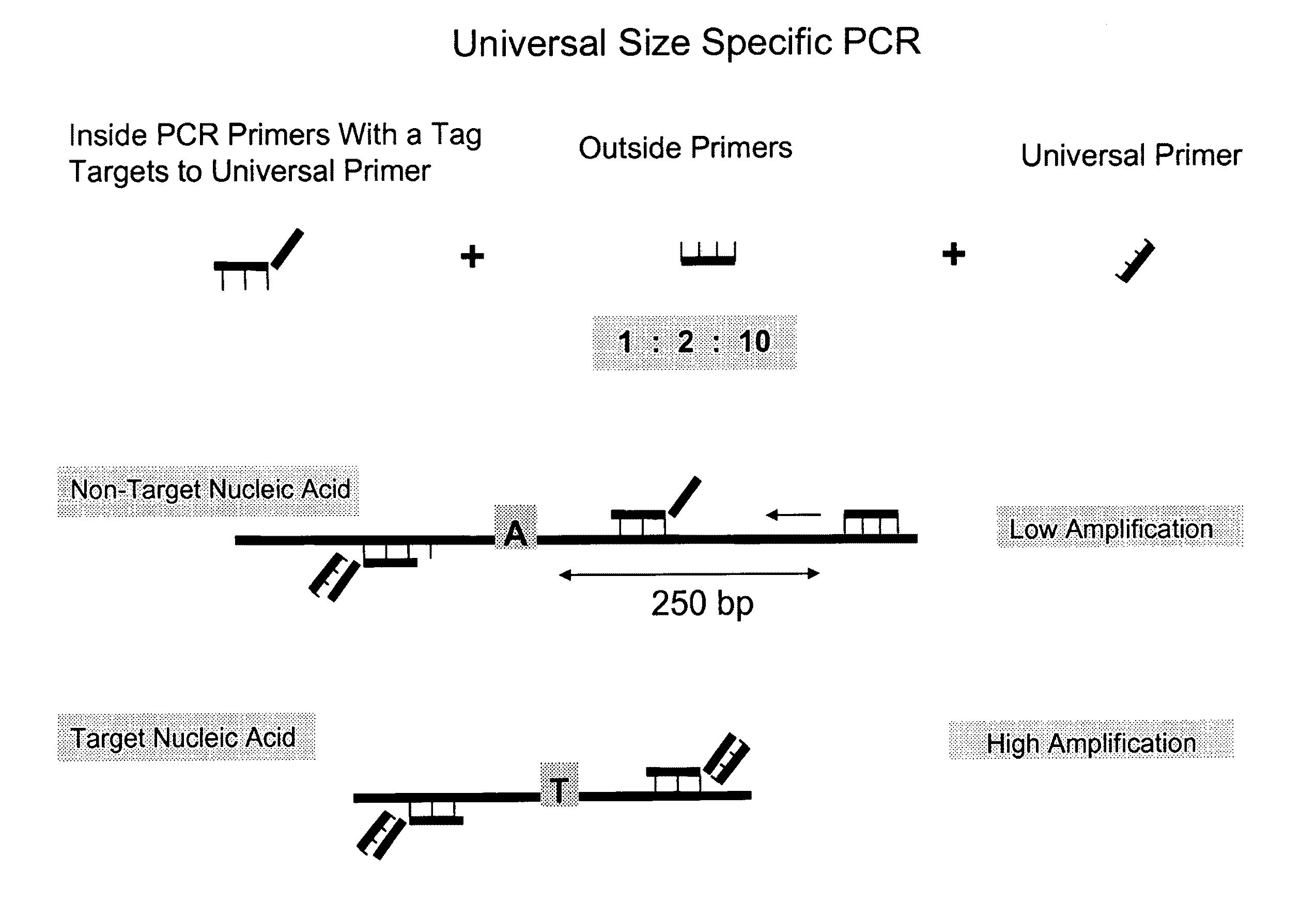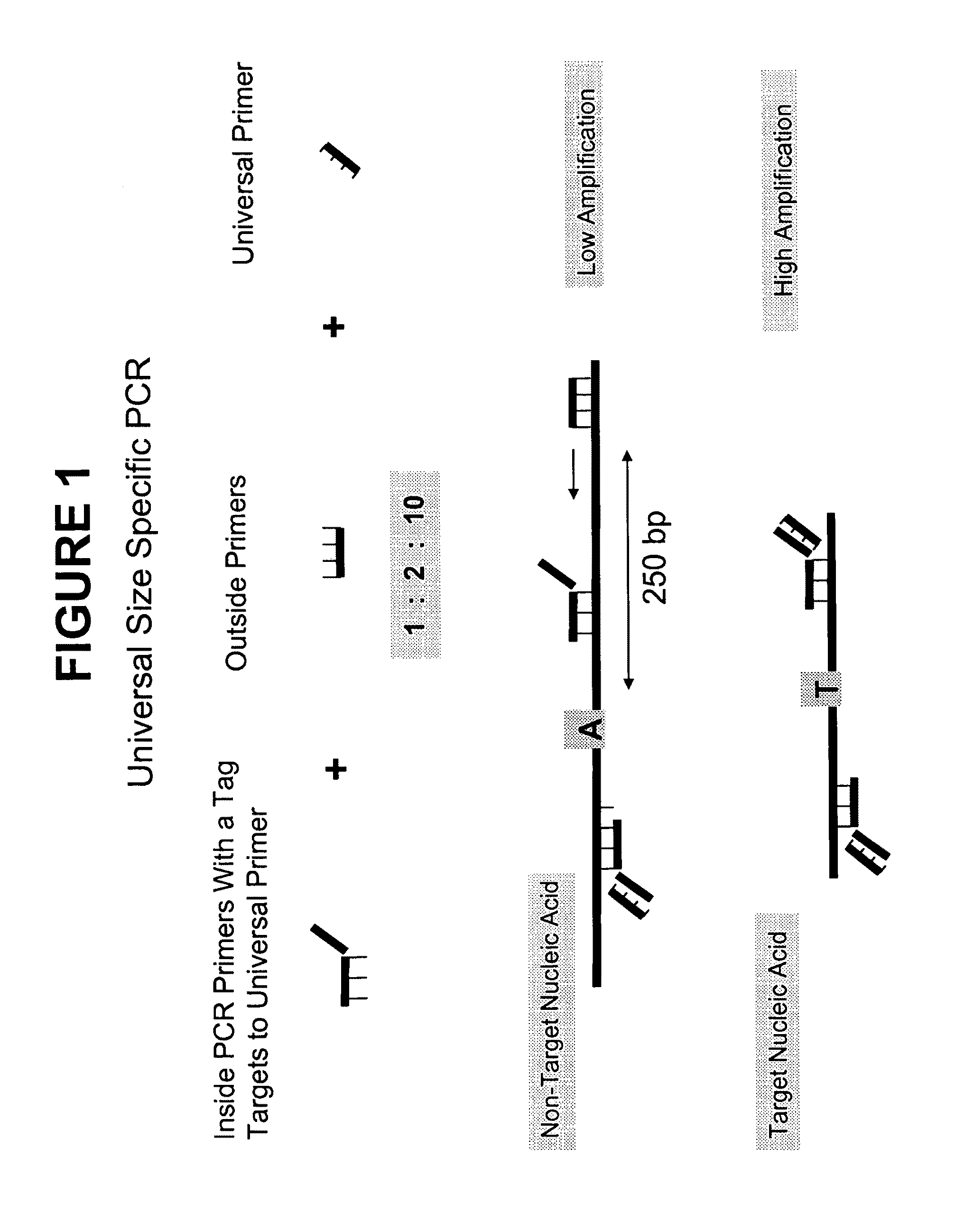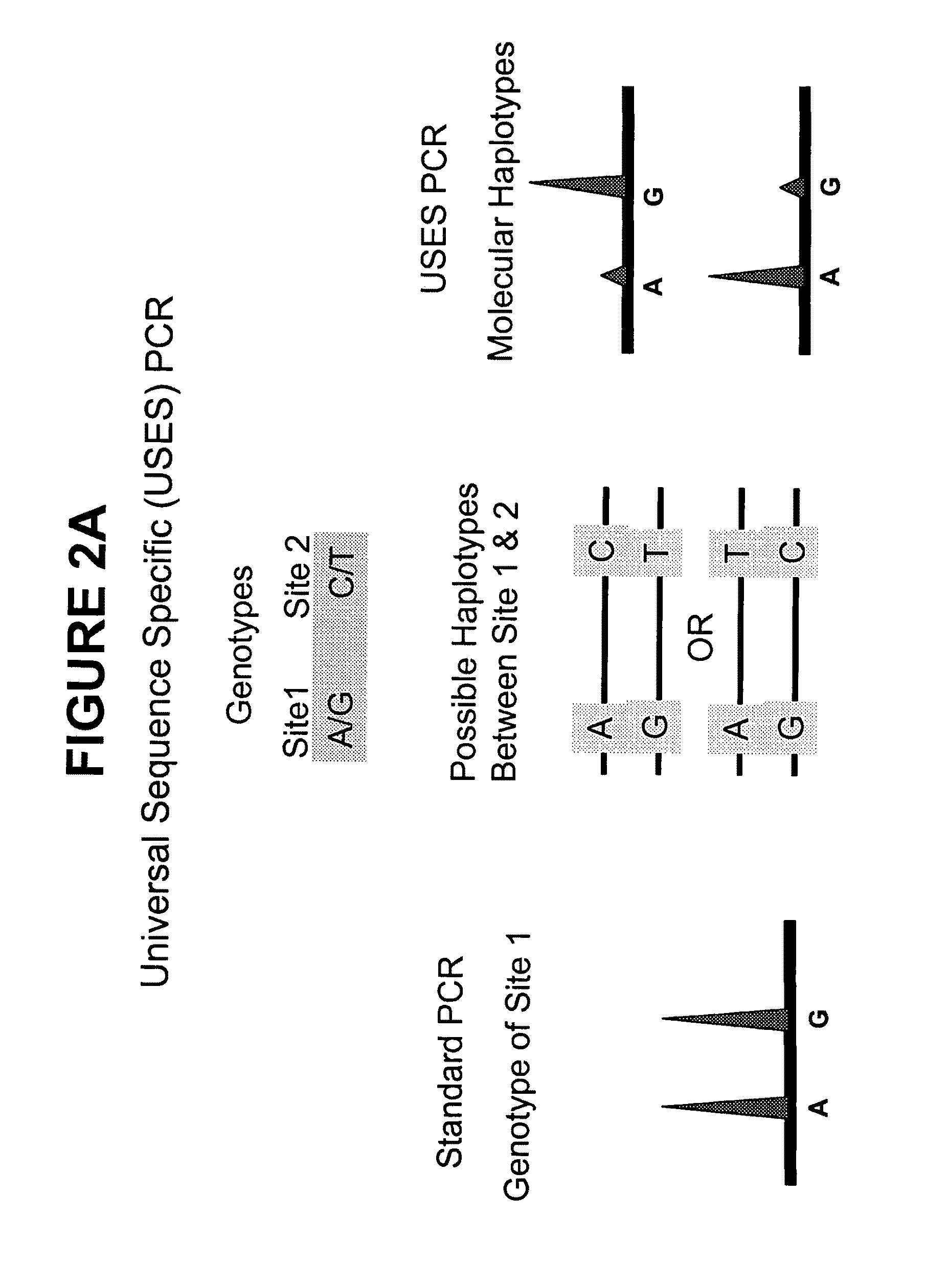Methods and compositions for universal size-specific PCR
a technology of pcr and universal size, applied in the field of products and processes for the amplification and detection of nucleic acids, can solve the problems of unimportant recovery of fragmented nucleic acids from biological samples, and achieve the effect of simple, cost-effective and automaticity
- Summary
- Abstract
- Description
- Claims
- Application Information
AI Technical Summary
Benefits of technology
Problems solved by technology
Method used
Image
Examples
example 1
Preferential Amplification of Short-Stranded DNA Using Universal Size Specific PCR
[0107]The below example provides a process, using a method provided herein, to preferentially amplify, and thereby enrich, target DNA based on its size using inside and outside primers in combination with universal PCR. A schematic showing the general features of this method is provided in FIG. 1. The primer sequences, PCR sequences, universal primers, long and short DNA sequences, and genomic sequences referred to in this Example are provided in FIG. 4.
[0108]1. DNA Dilutions
[0109]First, 800 bp and 200 bp DNA fragments were generated by PCR. Both the long fragments (actual length=783 bp) and short fragments (actual length=169 bp) included a single nucleotide polymorphism (SNP) rs6687785—an NT polymorphism. Two different samples (Sample 1 and Sample 2) of known sequence at SNP rs6687785 were used to generate the long and short DNA fragments, thereby ensuring the long DNA fragment was homozygote for the ...
PUM
| Property | Measurement | Unit |
|---|---|---|
| temperatures | aaaaa | aaaaa |
| temperatures | aaaaa | aaaaa |
| temperatures | aaaaa | aaaaa |
Abstract
Description
Claims
Application Information
 Login to View More
Login to View More - R&D
- Intellectual Property
- Life Sciences
- Materials
- Tech Scout
- Unparalleled Data Quality
- Higher Quality Content
- 60% Fewer Hallucinations
Browse by: Latest US Patents, China's latest patents, Technical Efficacy Thesaurus, Application Domain, Technology Topic, Popular Technical Reports.
© 2025 PatSnap. All rights reserved.Legal|Privacy policy|Modern Slavery Act Transparency Statement|Sitemap|About US| Contact US: help@patsnap.com



